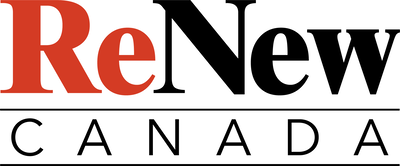RC121 NovDec 2025 - Magazine - Page 36

LEGAL
CONTRACT TOOLS
Managing supply chain disruptions during economic uncertainty
by Seema Lal and Gurjot Sunner
ISRUPTIONS FROM GLOBAL EVENTS such as trade wars
can lead to signi昀椀cant economic uncertainty.
The rapidly evolving situation surrounding the
imposition of U.S. tari昀昀s on Canadian goods and
the reciprocal tari昀昀s placed by Canada on U.S.
imports have resulted in supply chain disruptions
that have led to dire consequences for many industries,
including the construction industry. The imposition of
these tari昀昀s has only exacerbated the supply chain disruptions and labour shortages that the industry was already
dealing with as a result of the COVID-19 pandemic. Admist
this tense trade and supply-chain situation, it is imperative to consider risk management strategies to address the
ongoing uncertainties surrounding these issues.
In this article we will assess strategies for managing
economic and other legal risks stemming from tari昀昀s,
changes in law and supply chain disruptions from a legal
perspective, including how contracts can be set up to
mitigate risks resulting from changing market conditions
and changes in law.
D
Seema Lal is a Partner
and Co-Chair of the
Construction and
Infrastructure Practice
Group at Singleton Urquhart
Reynolds Vogel LLP.
Gurjot Sunner is an
Articled Student at
Singleton Urquhart
Reynolds Vogel LLP.
Current lay of the land and the impact on supply chains
The U.S.-Canada tari昀昀 situation remains 昀氀uid, with ongoing changes re昀氀ecting shifting economic priorities. As
it stands, we have seen impacts on construction projects
such as increased material costs, increased disputes, project delays, and supply chain disruptions. In some cases,
these factors have resulted in projects being cancelled or
abandoned and a rise in insolvencies, particularly in the
residential sector (which is facing additional risks related
to the softening real estate market).
E昀昀ective June 4, 2025, the U.S. proclamation Adjusting
Imports of Aluminum and Steel into the United States, increased U.S. tari昀昀s on steel, aluminum, and their derivatives from 25 per cent to 50 per cent. Further, e昀昀ective
August 1, 2025, the U.S. imposed a 50 per cent tari昀昀 on
copper imports pursuant to U.S. proclamation Adjusting
Imports of Copper Into the United States. Tari昀昀s on Canadian
goods were also increased from 25 per cent to 35 per cent
pursuant to U.S. executive order Amendment to Duties to
Address the Flow of Illicit Drugs Across our Northern Border.
E昀昀ective March 13, 2025, Canada imposed 25 per cent
retaliatory tari昀昀s on a list of products including $12.6
36—RENEW CANADA – NOVEMBER/DECEMBER 2025
billion in steel products, and $3 billion in aluminum
products. E昀昀ective September 1, 2025, the tari昀昀s on certain
goods imported to Canada were removed pursuant to
order-in-council Order Amending and Repealing Certain
Orders Made Under the Customs Tari昀昀 (United States Surtax),
however, the tari昀昀s on imports of steel, aluminum, and
automobiles remain in place as of the date of this article.
Risk management from a legal perspective
Contracts may be structured to incorporate speci昀椀c
provisions that allocate and manage risk e昀昀ectively to
provide clarity, predictability, and security for parties to
a contract. The following are a few examples of contract
provisions that parties can consider incorporating in
order to provide protection against the risks arising from
economic uncertainty.
PRICE ESCALATION CLAUSES: A price escalation clause can allow
for the adjustment of a contract price if there has been an
increase in the cost of materials. This clause can enable
the contractor to be compensated for any increases in
cost that were not anticipated at the time the contract
was entered into. In order to ensure that there is balance
in the risk allocation, the project owner can require the
contractor to provide speci昀椀c information/documents
to support the request for payment for additional costs
and to demonstrate that the increase was due to unforeseeable events (i.e. one which the contractor could not
have reasonably anticipated) and may consider including a reference to a particular pricing index to determine
whether there has actually been an increase in the costs
of the speci昀椀ed materials. Incorporating minimum and
maximum thresholds for the right to an adjustment of
the costs and specifying speci昀椀c materials that the provision will apply to will also assist the owner in managing
their exposure in relation to the risk of these increased
costs. The bene昀椀t of such a clause for owners would be
to avoid a contractor adding a signi昀椀cant contingency to
their pricing to account for risks of cost escalations.
FORCE MAJEURE CLAUSES: A force majeure provision (which is
one that frees one or both parties from liability or obligation when extraordinary events occur that are beyond
their control such as natural disasters, war, pandemics)
can be incorporated into a contract to provide relief for a
RENEWCANADA.NET